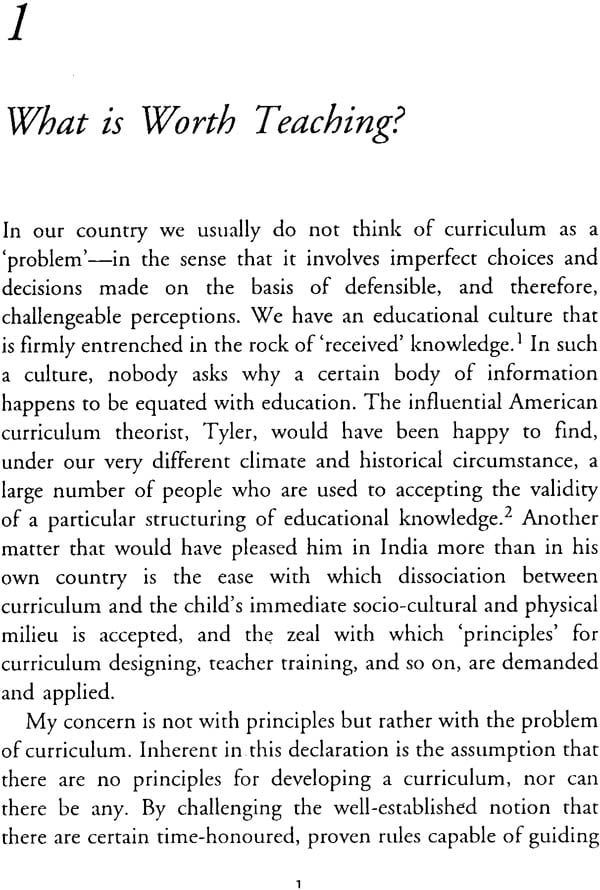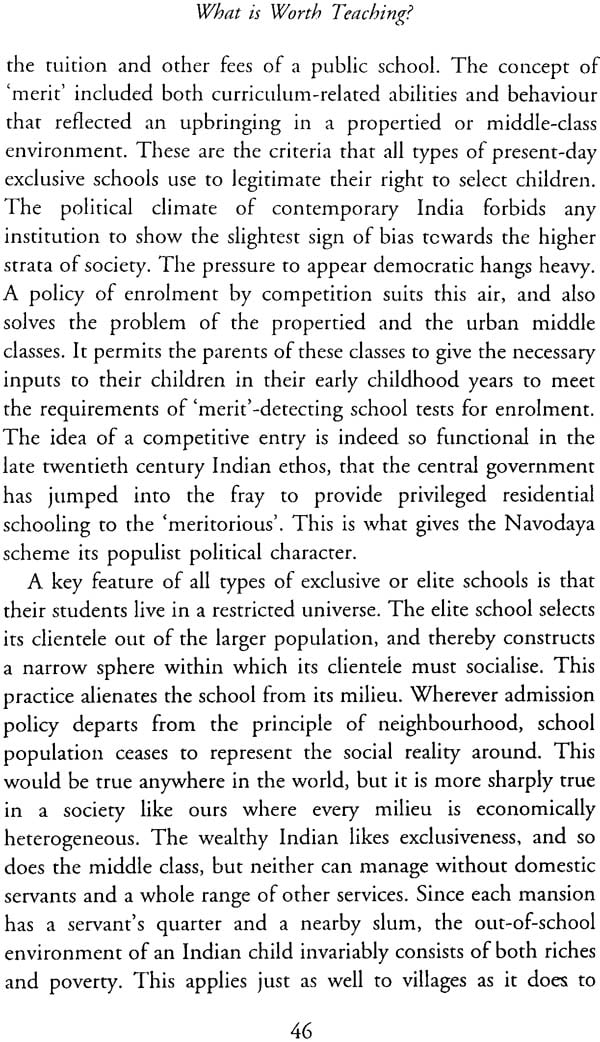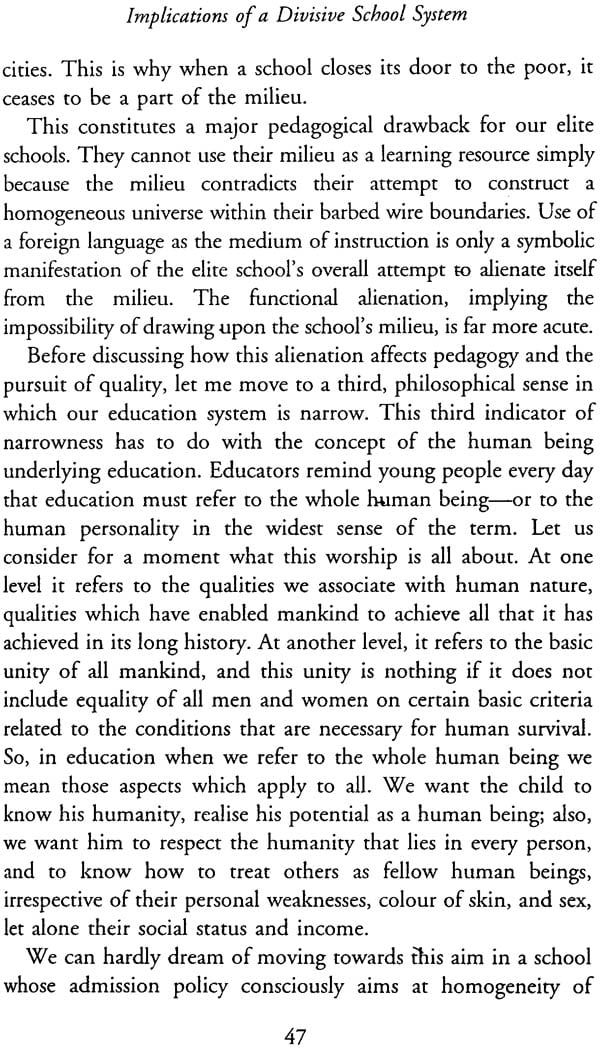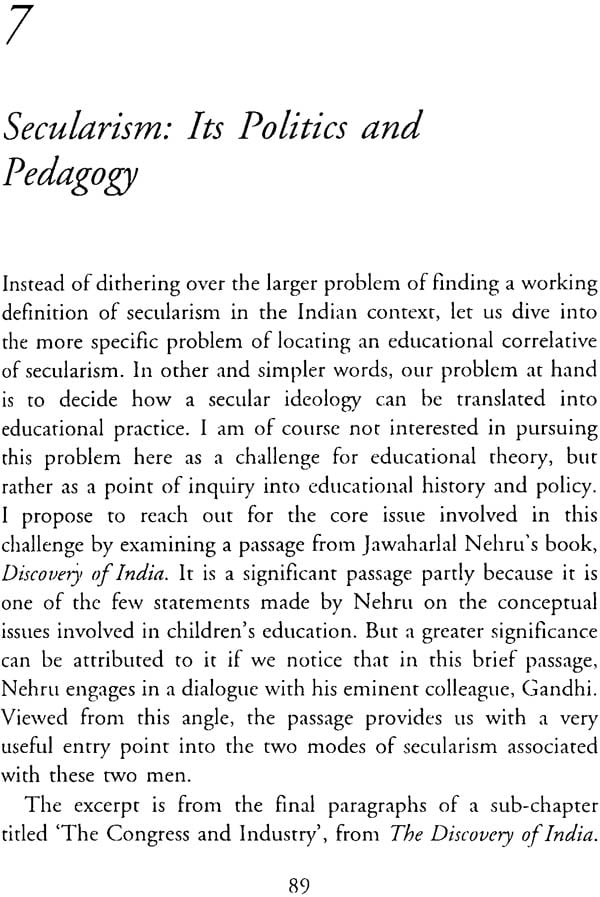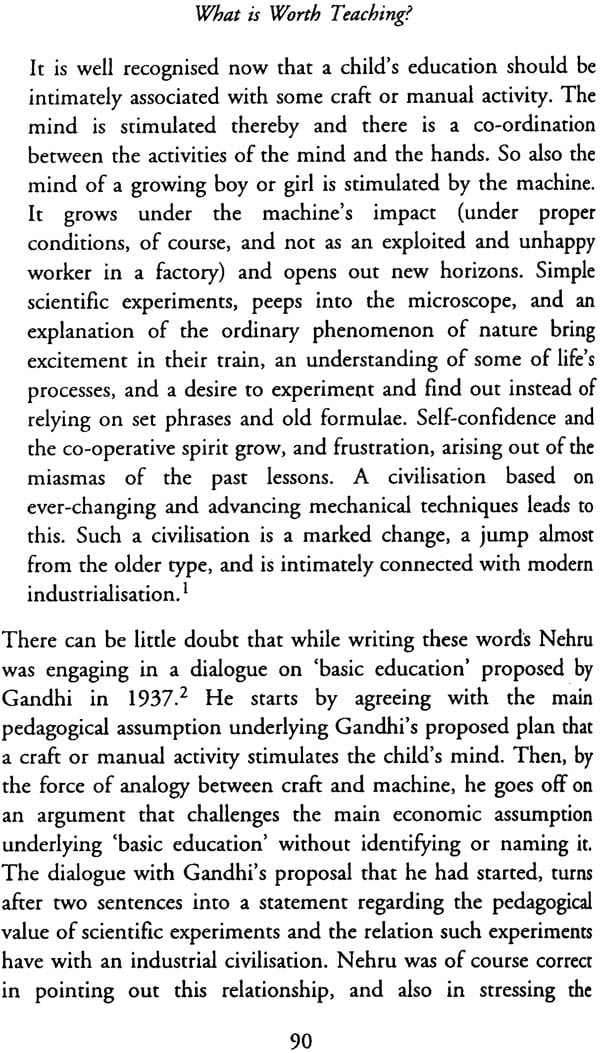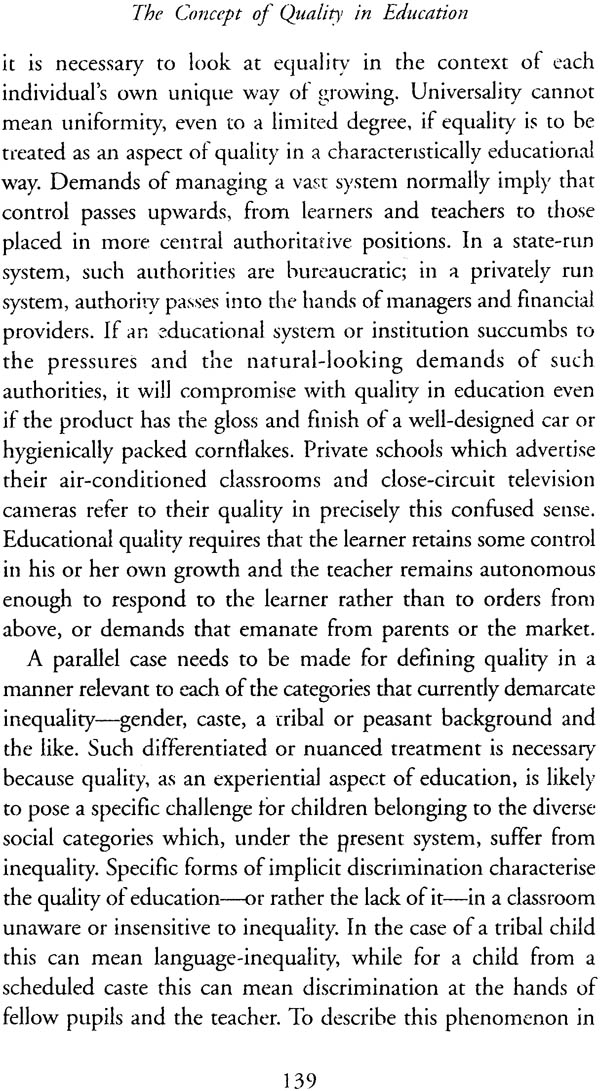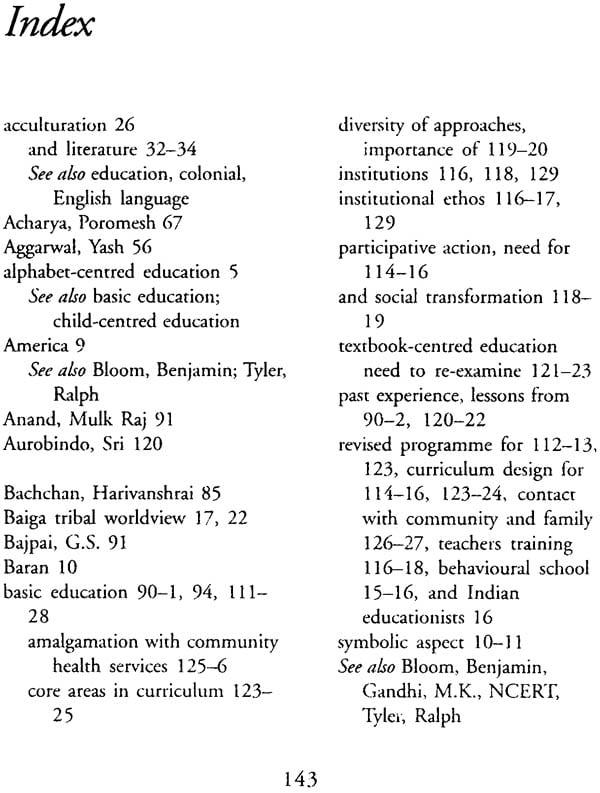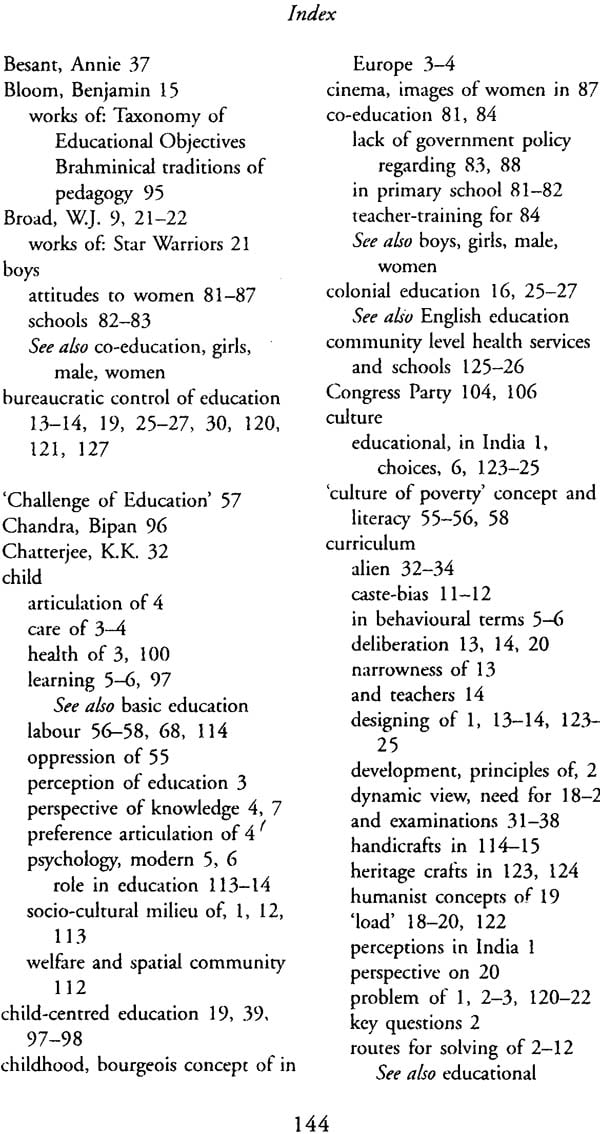
What is Worth Teaching?
Book Specification
| Item Code: | NAI422 |
| Author: | Krishna Kumar |
| Publisher: | Orient Blackswan Pvt. Ltd. |
| Language: | English |
| Edition: | 2020 |
| ISBN: | 9788125037521 |
| Pages: | 159 |
| Cover: | Paperback |
| Other Details | 8.5 inch X 5.5 inch |
| Weight | 170 gm |
Book Description
Originally published as a collection of Krishna Kumar's UGC national lectures, What is Worth Teaching? has acquired the status of a popular analytical text on curriculum inquiry. The title essay poses the problem of curriculum design and content as aspect of the relationship between education and society. The central theme of knowledge, its selection and representation is pursued in the book in the context of the issues such as, the teaching of reading, the use of the textbook, gender socialisation and the values associated with secularism. Structural and historical characteristics of the Indian system are used as frames to study the social character of school knowledge and skills.
What is Worth Teaching? covers a wide range of issues concerning institutional and pedagogic choices. From reading and storytelling in the early primary classes to the teaching of history in India and Pakistan, this collection offers an accessible introduction to critical inquiry in educational theory.
Professor Krishna Kumar teaches in the Department of Education at the University of Delhi. From 2004 to 2010 he served as the Director of the National Council of Educational Research and Training (NCERT). He is a recipient of Padma Shri, and the Institute of Education, University of London has awarded him with an honorary DLitt in education. Books by Krishna Kumar include Political Agenda of Education, The Child's Language and the Teacher, Learning from Conflict, Prejudice and Pride (a study of Indian and Pakistani school textbooks), Battle for Peace and A Pedagogue's Romance. Several of his books are in Hindi. Krishna Kumar writes fiction and essays in Hindi and also writes for children. He is currently engaged in a study of girls' upbringing and education.
First published in 1992, this book originally consisted of the text of four lectures which I had delivered under the University Grants Commission's scheme of national lectures in the late 1980s. In retrospect, it seems that the ethos of that period was quite remarkably different from the present, although the challenges we notice today are rather similar. Not only did the first edition of What Is Worth Teaching? do well in terms of finding a readership, it remained in demand. Three revised editions have come out so far, each one with some new lectures and essays added to the original four. In this edition too, one new essay has been added.
Looking back at the educational discourses of the last two decades, I am reminded of a problem which came up during the interaction following the first lecture when it was delivered in the M.S. University of Baroda. The problem is that of a ' fracture between the discourses of the teacher, the teacher trainer, the parents and all others involved in everyday school life, on one hand and the discourses used by educational planners especially economists, senior administrators and the media on the other. While the first set of interlocutors are mainly concerned about the curriculum, the syllabus, the text book and Examinations, those belonging to the second set are concerned mainly with organisational and financial requirements of education and the social distribution of opportunities. Issues which arise out of the social and cultural conditions in which the child's life at school unfolds do not receive adequate attention in either of the two discourses. In India, a handful of scholars have been interested in life inside the 'black box' of the classroom, as Miachel Apple has called it. Their insights have so far remained unnoticed in the world of pedagogues or teacher-educators and teachers themselves, let alone the world of planners and administrators.
I have been hopeful that this book will continue to serve as a useful guide in this divided terrain and those who find time to read all the essays in it will be able to imagine the kind of bridges that can be constructed to connect the diverse fragments of our educational world. Compared to the late 1980s, there are today a greater number of researchers and writers in the field and their contributions have begun to make education look like credible discipline and a worthwhile area of social enquiry. Although the voices of the philosophers and historians are still quite rare or inaudible, the overall situation is undoubtedly better than it was two decades ago. A new kind of discourse has begun to take shape and its impending growth is a certainty.
One hopes that this new discourse will enable us to deal with the challenges facing us in the shifting era of globalisation and hardened consciousness. We can already recognise a whole new scenario marking the exacerbation of inequality, poverty and social disintegration on one hand, and the popularity of pleas for commercialisation on the other. We have entered an uncertain patch in the history of education, a patch in which policy is likely to be increasingly replaced by pressures. The need to study education on a sustained basis, as an object of inquiry and not merely as an object of concern, will assume an even greater importance than it has had so far, for it is in education that some of the most unscrupulous games of global control will be played. Though what is Worth Teaching? does not directly say much on these issues, I hope it will inspire the reader to explore them.
The number of individuals who have contributed either directly or indirectly to the book is much too large to be acknowledged with specific names. Sadly, a few whose contribution was quite basic have passed away. One such person was the late Professor Sureshchander Shukla, who had nominated me as a UGC national lecturer in 1986. Educational debates in India continue to miss his vast and deep reading in the diverse fields of knowledge from which educational inquiry draws its substance and character. I would also like to recall my association with Professor Ravinder Kumar whose broad and deep concerns about India's modernisation were rooted in a rare kind of awareness of historical forces and the different kinds of potential they carry. I would like to acknowledge the contribution that several of my students have made to my knowledge and awareness of the living reality of teaching and schools. It is impossible to name them all, but I must mention Padma Sarangpani, Manish Jain and Latika Gupta. Finally, I would like to acknowledge the journals and magazines where these essays originally appeared. These include Economic and Political Weekly, Comparative Education Review, Seminar and Contemporary Education Dialogue.
| Preface | vii | |
| One | What is Worth Teachings? | 1 |
| Two | Origins of the Textbook Culture | 23 |
| Three | Implications of a Divisive School System | 42 |
| Four | Reading in the Primary Schools Curriculum | 55 |
| Five | Storytelling: What is the Use? | 70 |
| Six | Growing up Male | 81 |
| Seven | Secularism: Its Politics and Pedagogy | 89 |
| Eight | Peace with the Past | 102 |
| Nine | The Concept of Quality in Education | 129 |
| Index | 143 |
